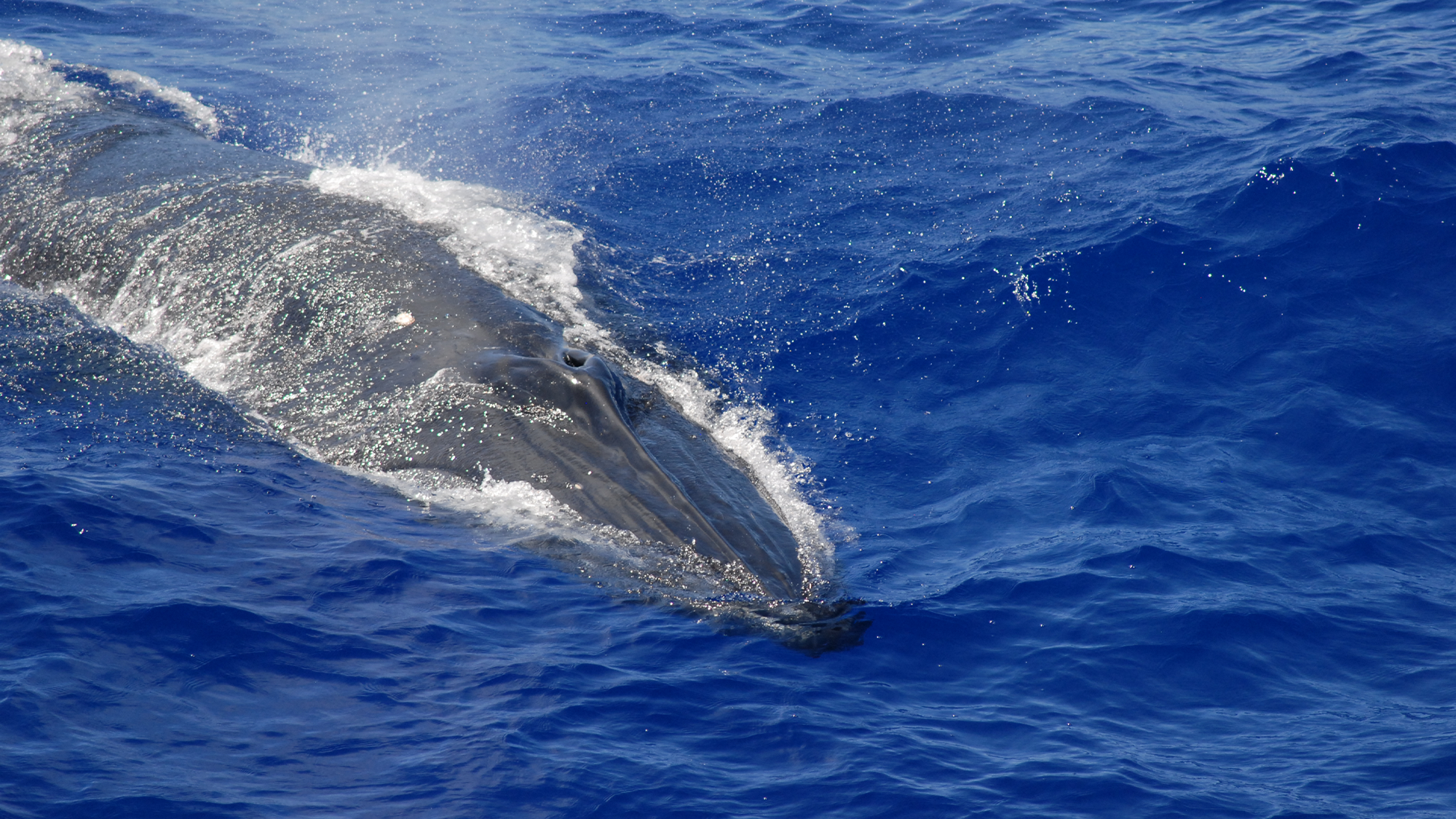

Whales are known for their noises, from humpback whale songs to the clicks and whistles of orcas and other toothed cetaceans. The elusive and understudied Bryde’s whale makes an even more mysterious noise called “Biotwang.” This whizzing tone using both low and high frequency pings sounds somewhat electronic or mechanical, unlike more melodic songs made by some baleen whales.
Now, this strange vocalization has been recorded and is part of a new repository that can help other scientists study whale vocalizations from eight different species. The findings are described in a study published September 18 in the journal Frontiers in Marine Science.
[Related: We finally know how baleen whales make noise.]
What is Biotwang?
Bryde’s whales–pronounced broodus–are found in the central and western North Pacific. They are less well-known than other baleen whales like humpbacks or right whales.
“Bryde’s whales are different from other baleen whales in that we think they may feed year round, migrating between low latitudes and mid latitudes, and following their food all over the ocean,” study co-author and NOAA research oceanographer Ann Allen tells Popular Science.
Their more complex patterns of movement around the ocean make them difficult for scientists to find. The team recorded several of these sounds in 2014 using autonomous acoustic recordings taken in the Mariana Archipelago near Guam.

“We only consistently found it in the Western North Pacific, which means that this call may be distinct to a population only found in this area,” says Allen. “That’s important because whale calls travel really far underwater, and allow us to monitor whales year round without needing a person there observing, but we can only do that if we know what species is making the sound.”
What has proven more elusive than the whales themselves is narrowing in on what biotwang is used for. The team heard Biotwangs from individual whales, small mixed groups, and mothers with calves during migration.
“It’s possible that they use the Biotwang as a contact call, a sort of ‘Marco Polo’ of the ocean,” says Allen. “But we need more information before we can say for sure.”
Twang, boings, and a lot of data
The team at NOAA had long term audio recordings of parts of the Pacific Ocean going back to 2005 and was able to pinpoint that Bryde’s whales are the source of this unusual sound. They then worked with a team of researchers from Google to analyze it. The data scientists used the Biotwang recordings to fine-tune their multi-species cetacean AI model to analyze such a large set of underwater sounds from the Pacific Ocean. With so much noise from vessels, plants, animals, and the moving of the ocean itself, undersea sounds can be difficult to decipher.
“Biotwang has this low frequency component that is followed by this higher frequency component,” study co-author and Google data scientist Lauren Harrell tells Popular Science. “I think it actually sounds like the original ‘ping’ on the Starship Enterprise from Star Trek.”
In addition to telling Bryde’s whales apart from other noises based on their Biotwang, the model also can be used to better predict humpback whale migrations and identify some of the sounds that minke whales make, commonly called the “minke boing.” These noises were first detected by submarines off the coast of California and Hawai’i in the 1950s and described as a “metallic-like ring.”
[Related: We can protect whales from ship strikes by translating their songs.]
“The minke boing also has a similar history as Biotwang, as this mysterious sound that scientists later uncovered was coming from a particular whale species,” says Harrell. “We were able to create minke labels in the model and find that minke boing all because we went back though all of these samplings.”
The model that Harrell and the team worked on now allows researchers to decipher the vocalizations of up to eight separate whale species in a single recording. They can then use it to track the sounds to where and when they appear in different parts of the world to inform better conservation practices.
“Having a model that can at least go through these long term data sets efficiently and identify and classify where some of these species are likely present, that can then also break that down by time and frequency can really unlock our ability to study these species,” says Harrell.